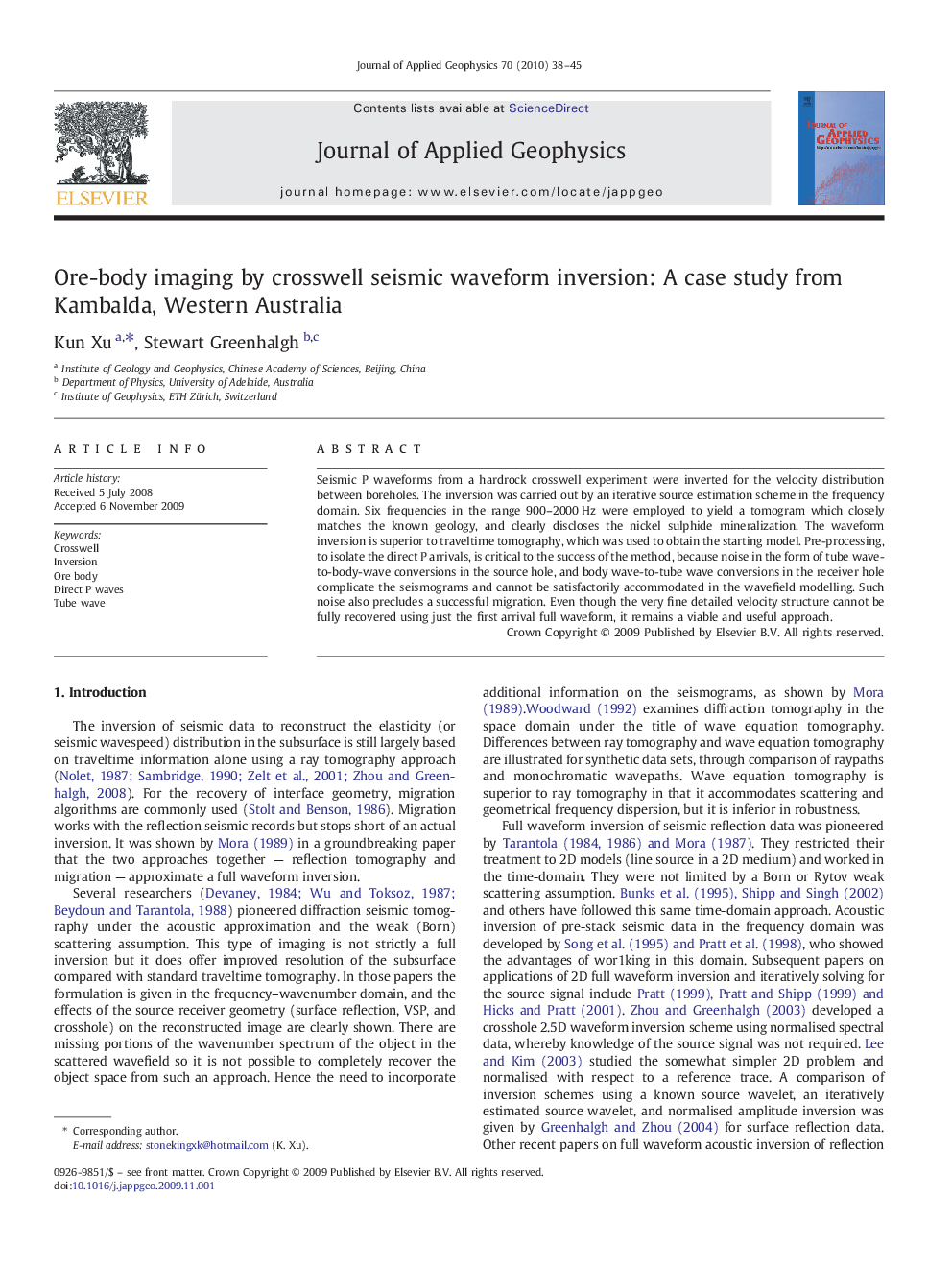| Article ID | Journal | Published Year | Pages | File Type |
|---|---|---|---|---|
| 4740876 | Journal of Applied Geophysics | 2010 | 8 Pages |
Seismic P waveforms from a hardrock crosswell experiment were inverted for the velocity distribution between boreholes. The inversion was carried out by an iterative source estimation scheme in the frequency domain. Six frequencies in the range 900–2000 Hz were employed to yield a tomogram which closely matches the known geology, and clearly discloses the nickel sulphide mineralization. The waveform inversion is superior to traveltime tomography, which was used to obtain the starting model. Pre-processing, to isolate the direct P arrivals, is critical to the success of the method, because noise in the form of tube wave-to-body-wave conversions in the source hole, and body wave-to-tube wave conversions in the receiver hole complicate the seismograms and cannot be satisfactorily accommodated in the wavefield modelling. Such noise also precludes a successful migration. Even though the very fine detailed velocity structure cannot be fully recovered using just the first arrival full waveform, it remains a viable and useful approach.
